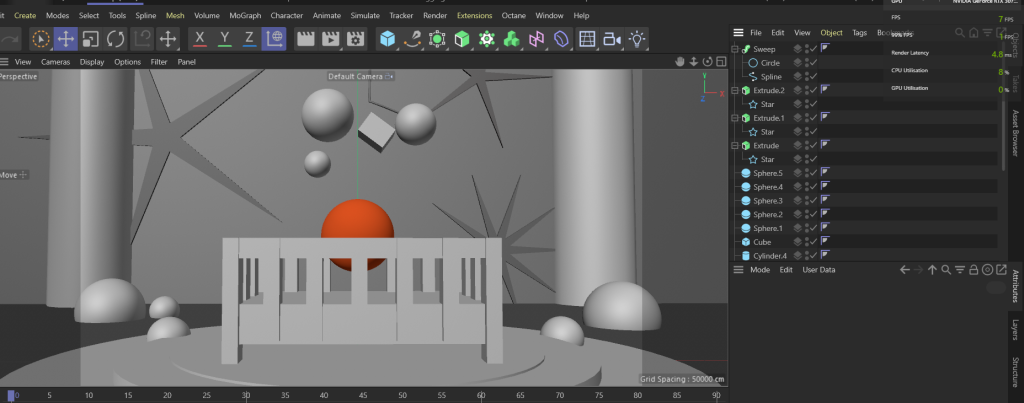-> 02 Feb 2024
Week 4 – Class session
TELLING STORIES THROUGH THE CAMERA
Who are your main character and their counterpart? What propels and inspires them to take action, and how will this influence your animation or story?
Here are the notes I recorded during the class.
Character introduction building.
- MR. bean is a good example of a simple character
- Show the audience (personality) without you telling your story.
- Show not tell !!
- Friends and family are also good examples who can understand your story.
- Watch Blue Eyes on Netflix. I watched all the episodes. ( It is good, but there is too much blood. )
Some notes from the class.
Study the video:
- Writing character introduction is clear
- evocative
- physical description is useful for story-building in a screenplay
- body language -> indication for audience
- try to have that instead of playing something outside of your setting
- talking about how to showcase your character
Another video:
- simple move example: demonstrate a demo of how to showcase your
- medium close-up action hero entrance
- a wide establishing g shot
- car#s type show
- footwear -> custom design
- fake cig -> a ciggaate
- he looks nervous -> shows the atmosphere
- It can change the audience’s perspective -> grasp the audience’s attention
Camera animation Tips for 3D artists
- Separate your sequencer on your previs
–
Video: Captain Jack Sparrows
- the pirate from the establishing shots
- clearly doesn’t care about his ships. He is not a good captain
- The transition of the scene
- He respects another pirate mutual respect: amplifies the character’s personality
- Everyone is focusing on him. The character is landing on time before his ship sink
- In the sense that you know he is lucky and smart -> intrigues your attention to character.
–
Star Wars video example:
- The red colour symbolizes the bad, blood, and anger. And we know he is the bad guy.
–
Batman opening scene video:
- Pay attention to the music, and it will give the audience a clue of the atmosphere.
- Establish scene: we see a window ( a main entrance ). We know this person is not good.
- No dialogue but we know what’s happening. We know he is a politician. Maybe there is a corruption.
- We see a man standing behind the character in the dark.
What Makes a Compelling Character?
Before we start creating characters, let’s understand what makes them interesting. A compelling character is someone who:
- Makes you feel for them (not necessarily likeable)
- Has many sides to them
- Isn’t perfect; they have faults
- Takes action to achieve their goals
To sum up, we should consider carefully how you introduce your character. Since your animation may lack dialogue, it’s crucial to convey the character’s traits swiftly through gestures and body language.
Demonstrate the character’s personality through actions rather than words, ensuring a show-don’t-tell approach.
–
Storyboard exploration
The animation shows life from beginning to end in just one minute.
It starts with a baby in a crib, and then quickly shows scenes of going to school, graduating, and working. The same routine repeats over and over again.
At the end, people pass away without realizing how repetitive their lives were, and the cycle starts again, like a loop in a film.

Moodboard
Scenes composition

- Proposal PPT link
About the topic:
The animation shows life from beginning to end in just one minute. It starts with a baby in a crib and then quickly shows scenes of going to school, graduating, and working. The same routine repeats over and over again.
Here are three keywords that underpin my project’s theme:
- Life -> I aim to weave a universal story that resonates across different age groups, providing a shared sense of memory and understanding.
To encapsulate the essence of life, I’ve centred my animation around the common phrases “Life is short” and “Life is repeated.” These two concepts have guided the structure of my animation. I’ve created a short film, just one minute long, to reflect the brevity of life. Additionally, the characters in my film undergo a repeated daily routine, symbolizing the cyclical nature of life. This repetition not only reinforces the thematic underpinning of life’s repetitiveness but also connects with the viewer on a profound level, as it mirrors the often repetitive flow of our daily experiences.


About the character design:
For the character design, I was inspired by many design studios that create cute, simple characters using basic geometric shapes. My tutor suggested making characters with detached hands to simplify animation, which was a great tip since I’m not very good at rigging. Luckily, my friend Mariana knows a lot about rigging in MAYA. She not only helped me out but also taught me how to do it. I’m really thankful for her help, as it made animating my characters a lot easier.
–
The character changes outfits by swapping out the materials of their clothes, which helps show their job level. For example, they wear a T-shirt as an intern and a formal suit as a senior manager. I tried out different clothing looks using Adobe 3D Substance and tested them by making the character walk. This helped me see how the animation would turn out and made me excited to work on making the character’s personality really come alive in the animation.

Study: different levels of business attire
